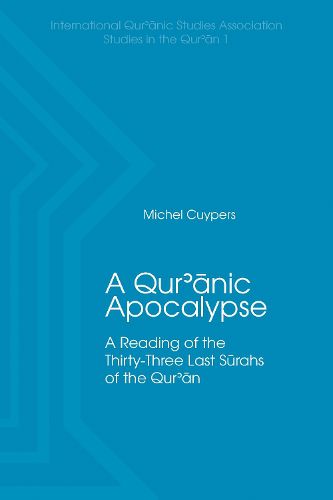Readings Newsletter
Become a Readings Member to make your shopping experience even easier.
Sign in or sign up for free!
You’re not far away from qualifying for FREE standard shipping within Australia
You’ve qualified for FREE standard shipping within Australia
The cart is loading…






After having explored the structure of the long sura 5 in his book The Feast (2007), Michael Cuypers applies the same rhetorical analysis to the thirty-three small suras (81 to 114) of the end of the Qur'an. Reading the text using the principles of Semitic rhetoric makes it possible to grasp the internal coherence of each of these suras, and also the semantic links that link them together.
These suras (chapters), usually treated as small independent textual units, actually form a semantically coherent set composed of several hierarchical subsets. This results in new interpretations for suras, of which more than one raises questions because of their extreme brevity. Two major themes dominate: eschatology (Day of Judgment and resurrection) and the life of the Prophet, evoked by small discontinuous touches, from the awakening of his prophetic mission to the triumph of his preaching.
The rhetorical analysis is enriched by intertextuality, confronting the Koranic text with the sacred literature circulating in late antiquity: the Bible, in the first place, but also several intertestamental writings, the Book of Enoch, the Testament of Moses and others. The image that emerges from these suras, dating from the Meccan era, is that of a messenger in charge of announcing the Day of Judgment.
$9.00 standard shipping within Australia
FREE standard shipping within Australia for orders over $100.00
Express & International shipping calculated at checkout
After having explored the structure of the long sura 5 in his book The Feast (2007), Michael Cuypers applies the same rhetorical analysis to the thirty-three small suras (81 to 114) of the end of the Qur'an. Reading the text using the principles of Semitic rhetoric makes it possible to grasp the internal coherence of each of these suras, and also the semantic links that link them together.
These suras (chapters), usually treated as small independent textual units, actually form a semantically coherent set composed of several hierarchical subsets. This results in new interpretations for suras, of which more than one raises questions because of their extreme brevity. Two major themes dominate: eschatology (Day of Judgment and resurrection) and the life of the Prophet, evoked by small discontinuous touches, from the awakening of his prophetic mission to the triumph of his preaching.
The rhetorical analysis is enriched by intertextuality, confronting the Koranic text with the sacred literature circulating in late antiquity: the Bible, in the first place, but also several intertestamental writings, the Book of Enoch, the Testament of Moses and others. The image that emerges from these suras, dating from the Meccan era, is that of a messenger in charge of announcing the Day of Judgment.